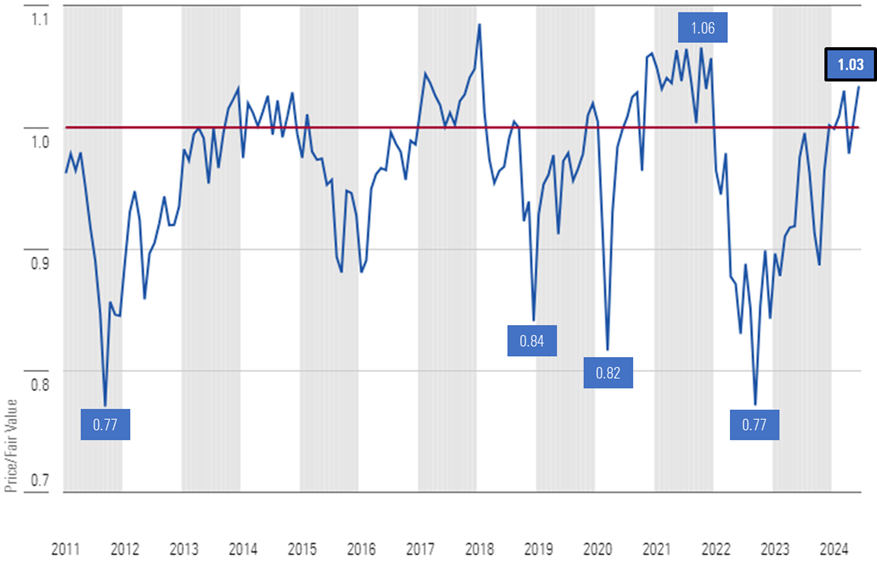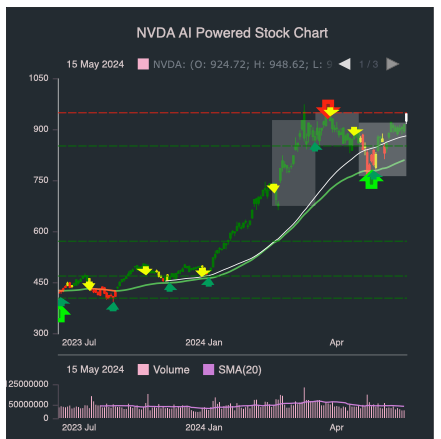20 New Reasons For Picking AI Stock Picker Analysis Sites
20 New Reasons For Picking AI Stock Picker Analysis Sites
Blog Article
Top 10 Tips For Evaluating The User Interface And Experience Of Ai Trading Platforms That Predict And Analyze Stocks
The User Interface (UI) and the User Experience (UX) of AI platforms for predicting and analyzing stocks are essential to making sure that they are efficient, usable and overall satisfaction. An undesigned interface could hinder the process of making decisions, even when AI models behind it are robust. Here are the top 10 guidelines for evaluating the UX/UI of these platforms:
1. Evaluation of the intuitiveness and ease of use
Navigation: The platform should be simple to use. It should be clear buttons, menus and workflows.
Learning curve: Measure the speed at which an individual is able to be able to learn and utilize a system without lengthy instruction.
Consistency - Check the patterns used on all platforms for consistency (e.g. button colors and styles).
2. Check for Customizability
Dashboard customization: Find out if dashboards can be customized to display information, charts and metrics relevant to the user.
Layout flexibility - Make sure that the platform allows users resize or rearrange widgets and charts.
Themes and preferences: Find out if the platform offers dark/light modes or other visual preferences.
3. Visualize Data
Chart quality: Make sure the website has interactive charts that are of top quality (e.g. candlestick charts lines charts, etc.)) with zoom and pan functions.
Visual clarity: Make sure that the data is clearly displayed and with the appropriate labels, legends, and tooltips.
Real-time update: Make sure that the visuals are automatically updated to reflect developments on the market.
4. Test for Speed and Reactivity
Time to load: Make sure the platform is loaded quickly even when dealing with large datasets or complex calculations.
Performance in real-time: Make sure the platform is able to respond to data feeds in a flash without delay or lags.
Cross-device compatibility : Check if the platform is compatible with all devices (desktops, mobiles, tablets).
5. Assess accessibility
Mobile App: Ensure the platform offers an app for trading on the go that is fully functional.
Keyboard shortcuts: Ensure the platform supports keyboard shortcuts to advanced users.
Accessibility features: Check if the platform complies with accessibility standards (e.g. screen reader support, high-contrast modes).
6. Search and Filter Test functionality
Search effectiveness: The platform must enable users to search quickly for stocks, indices as well as other investments.
Advanced filters: Determine whether the user can apply filters to narrow results (e.g. by sector, capitalization, performance metrics).
Saved searches: See whether you are able to save searches or filters that you frequently use.
7. Check for Alerts & Notifications
Customizable alarms: Make sure users are able to set up alerts for specific situations.
Notification delivery - Check if alerts are sent out via multiple channels.
Check the alerts' timing and accuracy.
8. Connect to other tools
Broker integration: Ensure that your broker account is seamlessly integrated with your broker account in order to facilitate trade execution.
API access: Find out whether the platform permits advanced users to design custom tools and workflows.
Third-party interfaces: Check if the platform offers integrations with third-party tools (e.g. Excel or Google Sheets) and trading robots.
9. Review the Help and Support Features
Onboarding tutorials Make sure that new users have the ability to access tutorials.
Help center - Ensure that your platform has a comprehensive support center or knowledge base.
Customer support: Verify if the platform offers an efficient customer support (e.g. email, live chat, phone).
10. Test Overall User Satisfaction
User feedback Reviews and testimonials from studies to assess the level of satisfaction overall of UI/UX.
Trial period: Take advantage of an unpaid trial or demo to try the platform out for yourself and assess its usability.
Error handling: Check how the platform handles errors or edge cases (e.g., invalid inputs or server downtime).
Bonus Tips
Aesthetics are important, an attractive design can improve the user's experience.
Performance under stress: Ensure that your platform is responsive and stable in conditions of high market volatility.
Community and forums: Find out if the platform offers forums or a community for users to discuss feedback and tips.
These suggestions will assist you to examine the interface for users and experience of AI trading platforms which forecast or analyze the prices of stocks. You can be sure that they're effective, aligned to your specific trading needs and user-friendly. A good UI/UX will greatly improve your ability to make informed decisions and execute trades effectively. View the most popular ai investment app advice for website examples including ai stock trading, best ai trading app, ai stock, ai stock market, stock ai, ai investment app, best ai trading app, ai for stock trading, investment ai, ai stocks and more.
Top 10 Ways To Assess The Speed And Latency Ai Stock Predicting/Analyzing Trading Platform
The speed and latency of the trading platform is a crucial factor to take into consideration, particularly when it comes to active traders or high-frequency investors, as well as algorithmic ones. Millisecond delays can have an impact on the success of the trade. Here are ten top strategies to evaluate the speed and latency of these platforms.
1. Real-time data feeds: How do you evaluate them
Data delivery speed: Ensure that the platform delivers real-time data with the least amount of delay (e.g. less than a millisecond delay).
Closeness of data source: Determine the location of servers in proximity to major exchanges.
Data compression: Check whether the platform is using effective techniques for data compression to speed up data delivery.
2. Test Trade Execution Rate
Order processing: The platform's ability to execute and process trades swiftly when an order is placed.
Direct Market Access: Verify that the platform provides DMA. DMA is a feature which allows you to send orders directly to exchanges without intermediaries.
Execution reports: See if the platform provides complete execution reports, which include timestamps for the submission of orders, confirmation of orders, and fill.
3. Examine the Receptivity of Platforms
User interface (UI) speed: See how fast the UI on your platform responds to inputs (e.g., clicking buttons or loading charts).
Updates to charts - Check that your charts are up-to-date in real time and without lag.
Performance of mobile apps: If you are using a mobile application make sure it runs as quickly as the desktop version.
4. Look for infrastructure that is not low-latency.
Server locations The platform should utilize low-latency, high-speed servers that are situated near major exchanges or financial hubs.
Co-location services: Find out if your platform offers this option. This allows you to host trading algorithms on servers located near the exchange.
High-speed network: Verify whether the platform utilizes high-speed fibre optic networks, or any other low latency technology.
5. Evaluate Backtesting and Simulation Speed
Test how fast the platform analyzes and processes old data.
The latency of the platform must be minimal enough to allow for real-time simulations of trades.
Parallel processing: Check that your platform supports parallel processing, also known as distributed computing, which speeds up complex computations.
6. Evaluation of Latency in API
API response time determining how quickly the platform’s API responds (e.g. getting market data or placing orders).
Rate limits. Check the API's rate limits to avoid any delays when high-frequency trading.
WebSocket Support: Check whether your platform is compatible with WebSocket protocols that stream data in real-time at a low latency.
7. Test Platform Stability Under Load
High-volume trading: Simulate high-volume trading scenarios in order to determine if the platform remains steady and responsive.
Test the platform in times when there is a lot of volatility on the market to make sure it is able to withstand rapid fluctuations in price.
Stress testing: Find out if the platform offers the tools to stress test your strategies under extreme conditions.
8. Study the network and its connectivity
Internet speed requirements. Make sure that your internet connection meets minimum speeds recommended for your platform to guarantee optimal performance.
Redundant Connections: To avoid interruptions, make sure that the platform can support redundant internet connections.
VPN latency If you're using a VPN for connection, make sure it doesn't introduce significant delay. Also check whether the provider offers alternative options.
9. Make sure to check for speed enhancement features
Pre-trade Analytics: Ensure that the platform has pre-trade analytics to optimize order routing, execution speed and other variables.
Smart Order Routing (SOR). Check if the platform uses SOR to identify the most speedy and cost efficient execution locations.
Monitoring latency: Verify if the platform provides tools to monitor and analyze latency in real-time.
Benchmarks for User Feedback Review
User reviews: Read the feedback of users to assess the platform’s performance in terms of speed and latency.
Benchmarks from third parties: Search for independent benchmarks or reviews that evaluate the performance of the platform to those of its competitors.
Case studies: Find out whether the platform offers cases studies or testimonials that highlight its low-latency capabilities.
Bonus Tips
Trial period: Take a a free test or demo version of the platform to test the performance of the platform in real scenarios.
Customer Support: Verify that the platform can offer assistance for problems related to latency or optimize.
Hardware requirements: Find out whether you require specific equipment to achieve the highest performance (e.g. high-performance PCs).
Use these guidelines to assess the speed and latency for AI platforms for predicting and analyzing stocks. Select the platform that best suits your trading needs, and also minimizes the time it takes to complete transactions. A low latency is crucial for algorithmic traders and high-frequency traders, as even minor delays can significantly impact profitability. View the most popular ai tools for trading advice for site info including ai stock investing, best ai for stock trading, ai software stocks, ai copyright signals, ai options trading, best ai for stock trading, ai share trading, ai stock predictions, stock trading ai, ai for trading stocks and more.